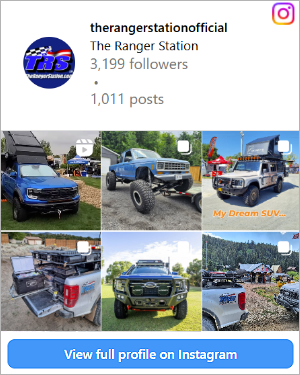- Joined
- Aug 28, 2019
- Messages
- 568
- Points
- 601
- City
- Central Colorado
- Vehicle Year
- 2019, '31, '27
- Engine
- Transmission
- Automatic
- Total Drop
- Stock, about a foot, about a foot
- Tire Size
- LT 265/65 R17, P285/70R15 & P195/65R15, 820-15 & 500-15
All this internet talk of catch cans. Would that impact the warranty at all? My gut says no but I’ve had a dealer try to tell me my aftermarket intake voided the warranty when my brake calipers failed at 15k.
I’m curious if I should get a catch can, especially if there is no harm in getting one. I commute in this rig in the winter and I only drive 2.5 miles each way. In the summer I hope to ride my bicycle.
No way.. no how am I installing one while the truck is under warranty.
Think about this for a minute. On our 2019/2020 Rangers the catch can manufacturers tie into a rubber vacuum line that is very short and then supply (2) 4 foot long rubber vacuum lines that go to / from the catch can. PCV valves open and close based on the amount of vacuum at the PCV valve. There is a pressure drop associated with those longer vacuum lines they supplied. Did they take that into account?
A guy over at the ranger5g.com site put a catch can on his truck. He then noticed the truck was getting a lot of gas in the oil. Every time he checked the oil dipstick, the oil level was higher and it wreaked of fuel. I suggested he remove the catch can... but he didn't. He takes it to the dealer... they have no idea what's going on.
Another guy posted photo's of what was in the catch can and said it was mostly fuel! You want those fuel vapors to get pulled through the system and piped back into the intake manifold... so those vapors will help clean the deposits off the valves!
The Mustang guys swear by the catch cans. But the motors in the Rangers are not identical, and there are specific differences.
The fact that the can collects "stuff" doesn't mean that "stuff" would have hurt anything if the can wasn't there.... in our Rangers....
If these catch can folks really wanted to convince us they would take two new 2019 Rangers, install a catch can on one Ranger, leave the other Ranger bone stock, and then drive the trucks, one following the other, for lets say 8,000 miles. Then take off the intake manifolds and compare the deposit build up on the intake valves.
You can't take some guy who has a catch cans word that it helps unless he pulled the intake manifold off, inspected the valves, then put on the catch can, drove the truck for a bunch of miles, then pull off the intake and inspect the valves again and saw a marked improvement.
Until some real world testing is done.... I'm not going to take their word for it.














